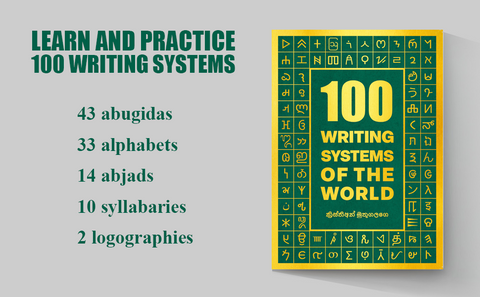The Enigmatic Beauty of the Devanagari Script: A Gateway to Ancient Wisdom and Modern Expression

1. Script type: The Devanagari script is an abugida, a type of writing system that combines consonants with inherent vowel sounds. It is highly phonetic and allows for efficient representation of the sounds in languages that use it.
2. Writing direction: The Devanagari script is written from left to right, following the standard direction used in many modern scripts.
3. Creator and invention time: The exact creator of the Devanagari script is unknown, but it is believed to have evolved from earlier Brahmi scripts around the 7th century AD. Its development was likely a collective effort by scholars and scribes over time.
4. Time period of use: The Devanagari script has been in continuous use for over a thousand years. It originated in ancient India and remains actively used to this day for various languages and writing systems.
5. Population and current usage: The Devanagari script is actively used by hundreds of millions of people across the Indian subcontinent and diaspora communities worldwide. It is the primary script for languages such as Hindi, Sanskrit, Marathi, Nepali, and many more.
6. Usage area: Geographically, the Devanagari script is used in India, Nepal, and parts of Bhutan. It has been a cornerstone of literary, religious, and cultural expression in these regions.
Interesting Facts:
- The name "Devanagari" translates to "the divine city's script" or "script of the gods." It reflects the script's importance in religious and spiritual contexts in ancient India.
- The Devanagari script is known for its beautiful, flowing letterforms and intricate ligatures. Its aesthetic appeal has made it popular among calligraphers and artists worldwide.
- The script has a rich history of manuscript production, with ancient texts and literary works preserved on palm leaves, birch bark, and other traditional materials.
- Devanagari has influenced other scripts in the Indian subcontinent, such as the Bengali, Gurumukhi, and Tibetan scripts, which have similar origins.
- The Devanagari script played a pivotal role in the Indian independence movement and the revival of regional languages, fostering a sense of linguistic pride and identity.
- With the advent of digital technology, the Devanagari script has become widely accessible through computer fonts and keyboard layouts, facilitating its use in modern communication.
The Devanagari script stands as a testament to the rich cultural, linguistic, and spiritual heritage of the Indian subcontinent. Its elegant letterforms carry centuries of wisdom, poetry, and philosophical thought. As we delve into the depths of Devanagari, we gain a deeper appreciation for the intricate connections between language, script, and the vibrant cultures that continue to flourish today.

Practice Devanagari and other scripts with our book "100 Writing Systems of the World"!
Discover 100 diverse writing systems from around the globe in one captivating book. Practice writing different scripts with full character charts and essential information provided. Let your imagination soar on the blank right pages as you explore 43 abugidas, 33 alphabets, 14 abjads, 10 syllabaries, and 2 logographic scripts. Dive into numeral systems and even design your own writing system. Immerse yourself in the beauty and diversity of global scripts today with "100 Writing Systems of the World." Unleash your creativity and order now!
